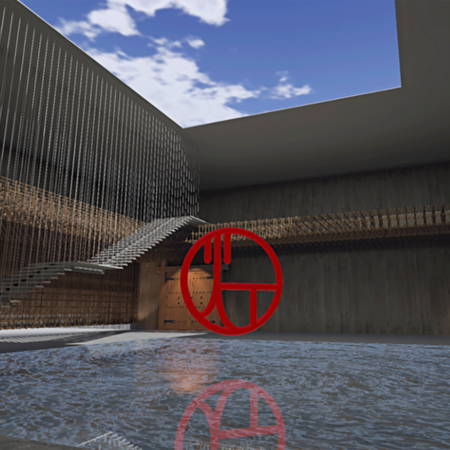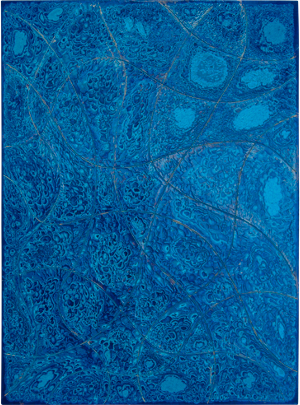This work utilizes the "choshitsu" technique, the most time and effort-consuming oriental lacquer technique since ancient times, in which dozens of color coatings are applied over a bare surface, which is then precisely carved. It was originally a Chinese technique, developed in Japan in the Kamakura period (1185-1333) as karamono lacquerware. It was much valued as a kind of Buddhist ritual utensil and tea ceremony tool.
The vision of the work reveals the “saihi” pattern” originated from China during the Song dynasty (960-1279); the carving is comparatively shallow but delicate. Similar works are extremely rare in China nowadays so the very few dozen in Japan are exceptionally valuable indeed. The creator of the work has been studying the few remaining pieces, visualizing the discernible skills of ancient artists. The work was also born from his long years of engagement in the restoration of cultural properties indeed. It was carved with alternating coats of shu-urushi (red lacquer) and suki-urushi (clear lacquer) with a unique design. The body is covered with a lid, and it is divided into chambers by "kakego". The delicate process of carving and lacquering also reveals his advanced skills, creation desires, and aspirations.
Art
The Art of Carved Lacquer
Cyoushitsusaihimonyoubako
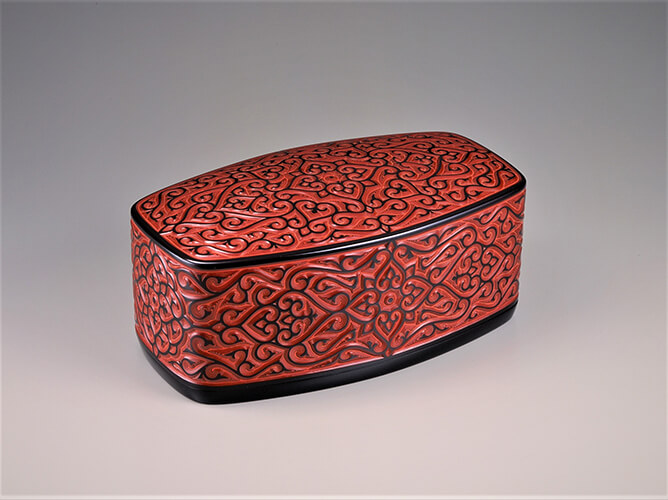
Artist
Bridging Generations: From Living National Treasure to Modern Mastery
Tatsuya Matsumoto
A lacquerware artist specializing in carved lacquer.
He trained under Kodo Otomaru (1898–1997), a native of Kagawa Prefecture who was nationally designated as a Holder of Important Intangible Cultural Property (so-called Living National Treasure) due to his achievement in carved lacquer.
He expresses the original design/pattern expressions of carved lacquer as the beauty of form instead of the beauty of use. Rescuing Japanese cultural assets inside and outside Japan, he has been restoring lacquerware valued as cultural assets. He has created a number of works featuring a wide range of designs including realistic expression such as botanical designs, abstract expression using geometric patterns, and expression using saihi designs (guri (curvilinear patterns) carved on layered urushi lacquer coatings of different colors).
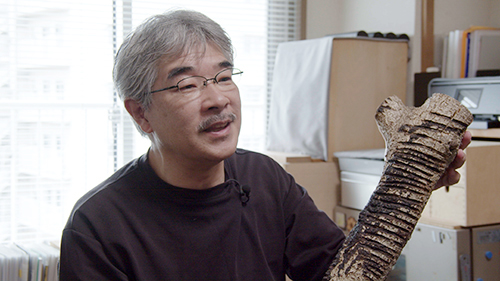
Art Style
Crafting Beauty from Nature's Resilience
Lacquer Art
Lacquer art refers to the techniques for creating works by coating objects with natural lacquer and then drawing designs/patterns on the surface. A drop of sap from the lacquer tree is the basic material of lacquerware. Lacquer trees, which grow only in Southeast Asia, provide a wonderful coating agent. As lacquer creates a decay-free film and repels water when it solidifies, it has been used for daily life tools since ancient times. Leveraging the characteristics of lacquer for exquisitely decorating items with gold, silver, and seashells, red lacquer and black lacquer have been used for musical instruments and boxes for storing important documents and clothing, as well as the helmets, armors, and weapons of samurai warriors. Today, splendid lacquerware works are being created including tea ceremony tools (e.g., tea containers called natsume, incense burners) and decorative boxes, in addition to bowls, trays and other daily life items. With 500 years of history, Japanese lacquerware can be found around the world.
Creating unique works, Tatsuya Matsumoto has been pursuing expressions using saihi.
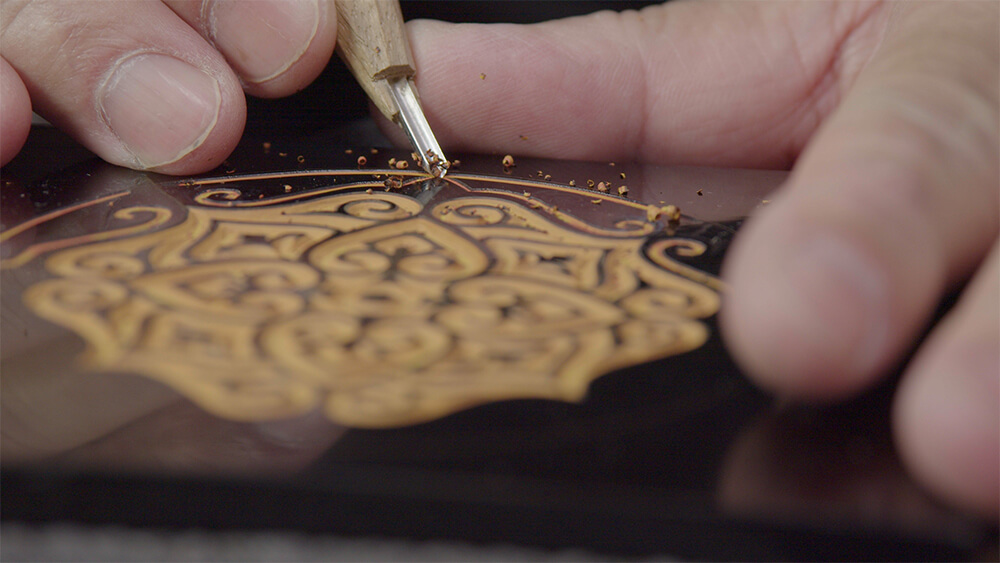
Roots
千年の匠の技、彫漆の豊かな遺産を明らかにする
彫漆とは、約千二百年前の唐時代が起源とされ日本へは、日本の禅僧により舶来された漆芸技法の一つである。朱漆だけを塗り重ねたものを堆朱(つしゅ)、黒漆だけを塗り重ねたものを堆黒(ついこく)という。現在では顔料の発達により様々な色漆が使われている。
まず、出来上がりを最初に想定し、黒、朱、黄、緑などの色漆を数十回、多いものでは百回以上も塗り重ねて厚い漆の層をつくり、この色漆の層を彫刻して立体感のある模様を彫り出していく。欲しい色層まで表面を彫り下げることにより、埋もれていた漆の色が表れ、芸術性豊かな絵模様が描き出される。塗り重ねた漆の層は厚く、文様は立体的に量感豊かに彫り出される。また、表面には、漆特有の滑らかな艶がある。
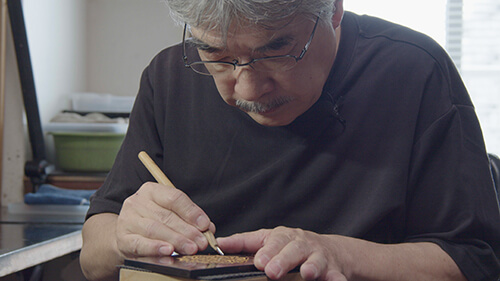
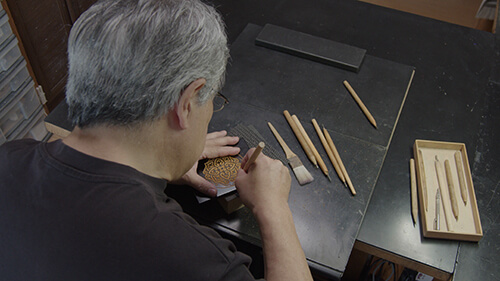

FAQ
よくあるご質問
こちらにないご質問内容はお問い合わせフォームよりお問い合わせください。
鎌倉彫とはどのような技法ですか?
鎌倉彫は、800年以上の歴史を持つ日本の伝統技法で、カツラやイチョウなどの木材に文様を彫り、漆を塗って仕上げる技術です。
「Water sky #1」の作品に使われている「Kenyu bleu」とは何ですか?
「Kenyu bleu」は、作者が幼少期に鎌倉の海と空、山の緑からインスピレーションを受けて作り出した、独自の青色です。
鎌倉彫はなぜ歴史的に重要性と言えるのでしょうか?
鎌倉彫は日本の歴史と文化に深く根ざしており、仏具や茶道具など多岐にわたる分野で用いられ、日本の伝統的な美意識を象徴しています。
三橋鎌幽氏の鎌倉彫における特徴について教えてください。
三橋鎌幽氏は、800年の伝統を継承しながらも、現代の感性を取り入れて独自の表現を追求し、「伝統」と「革新」を融合させた作品を創り出しています。
特集記事一覧
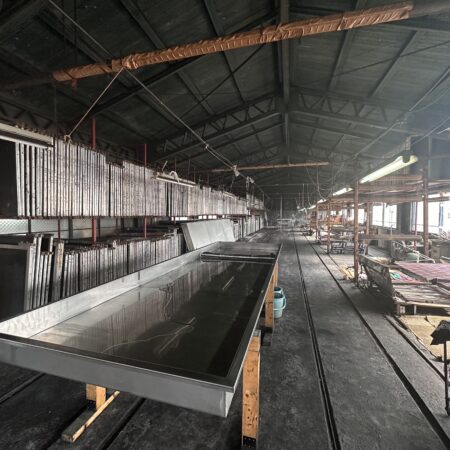
Connecting People and Tradition through Dyeing

Exploring the Charms of Miyazu City, Kyoto Prefecture

A Hidden Gem of Otsuki City: Experience Guide to Enjoy with Mount Fuji

A Heartwarming Journey through a Treasure Trove of Nature and History

Experiencing History and Inherited Memories in Asuka Village

Discover! The Charm of Miki City
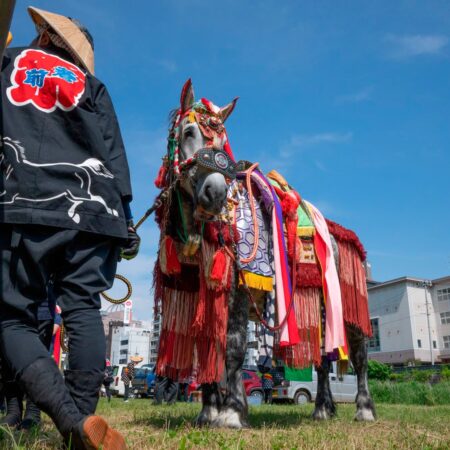
The Enchanting City of Morioka

Discovered! Exciting in Tokushima and Naruto City

